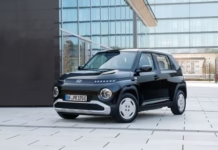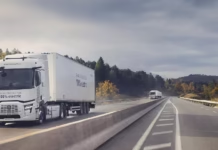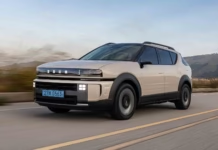Electric Vehicles and Long-Term Performance
EVs are reshaping the automotive landscape. One critical aspect of this transition is understanding how EVs perform over time, particularly the lifespan and reliability of their batteries—the most expensive and vital component of electric propulsion. Long-term endurance tests provide invaluable insights into real-world durability and usability, answering questions on range retention, charging speeds, and maintenance costs.
Among popular electric models, Volkswagen’s ID.3 has quickly become a benchmark for compact electric cars with its mix of performance, technology, and practicality. This summary draws on a detailed four-year, over 160,000-kilometer endurance test conducted by ADAC, one of Europe’s leading automotive organizations. It integrates findings on real-world range, battery health, charging technology, operating comfort, and maintenance, offering a balanced evaluation of the ID.3 as a long-distance EV.
VW ID.3 Endurance: Battery Health and Longevity
Battery longevity remains the paramount concern for EV owners. In the ADAC test, the VW ID.3’s 77 kWh battery demonstrated exceptional durability, maintaining a State of Health (SoH) of 91% after 160,000 km—well above the warranty trigger level of 70%. This is noteworthy given the battery was frequently charged to 100%, which generally hastens degradation, and sometimes left fully charged for extended periods, both unfavorable for battery life. The battery management and cooling systems have helped preserve capacity, allowing the ID.3 to remain reliable for long-distance drives, even beyond warranty coverage.
Periodic independent checks with the Aviloo Premium Test confirmed this robust performance. Despite harsh winter conditions and repeated fast charging, the ID.3’s battery showed only moderate aging, clearly indicating that high mileage electric cars can maintain efficient battery function for years.
Real-World Range and Cold Weather Considerations
The ID.3’s WLTP-rated range of 525 km translates to about 400 km on highways under temperate weather when driven economically. In colder conditions, such as subzero temperatures, this drops to approximately 300-320 km—but even an ambitious 400-kilometer alpine trip in winter was completed on a single charge, showing the car’s practical usability in challenging climates. The EV’s range remains stable over time, with only a slight reduction from 438 km at the test start to 425 km after 172,000 km, thanks largely to software optimizations that improve efficiency.
However, the car’s charging performance in cold weather is still problematic. Fast charging at high power (around 80 kW) is significantly slower in low temperatures despite the presence of a battery heater. Improvement via software updates focused on battery conditioning would enhance cold-weather charging and overall convenience for winter driving.
Charging Performance: Software Updates Make a Difference
Initially, charging peaked at about 125 kW at DC fast chargers but dropped substantially as charge levels rose. After a major software update in mid-2023 (version 3.2), the charging power improved by roughly 10-30%, reaching peaks above 160 kW and reducing charging times by around two minutes from 10% to 80% battery capacity. These improvements make the ID.3 more suitable for long trips requiring quick recharging, although winter charging remains slower than ideal.
The update also enhanced the onboard display, permanently showing battery percentage and making consumption details always visible, improving driver information and experience.
Driving Experience and Comfort
The VW ID.3 impresses with balanced chassis dynamics, precise steering, and responsive rear-wheel drive, making it lively and fun to drive. Comfortable seats and generous space for four adults contribute to a pleasant interior atmosphere. Advanced driver assistance like adaptive cruise control (“Travel Assist”) and matrix LED headlights further improve safety and relaxation during long journeys. Its compact turning circle excels in city traffic and parking. However, the ID.3 lacks roof load and trailer load capacities, limiting utility for activities like skiing or towing.
Consumption and Maintenance
Energy consumption slightly decreased over time due to software improvements in battery temperature management. The test’s average consumption was 23 kWh/100 km including charging losses, while everyday use ranged widely—from 13 kWh/100 km in mild, urban driving to 25-30 kWh/100 km in cold weather or highway conditions.
Maintenance needs remain low compared to combustion engine vehicles, with only two major services in over four years. However, the cost per check was relatively high, around €427-500, and additional servicing like air conditioning maintenance added to expenses.
Issues and Repairs: Software and Component Challenges
Despite its strengths, the ID.3 faced several challenges during the endurance test. Software glitches caused slow infotainment startup and required frequent user confirmations. Physical defects included a defective driveshaft needing multiple repairs, a failing GPS antenna, a damaged parking sensor, breakdowns linked to a 12-volt battery failure, and tailgate actuator replacement. Most of these were resolved under warranty, and some issues were fixed with subsequent software updates, improving reliability.
Final Verdict and Outlook
After 160,000 kilometers, the Volkswagen ID.3 stands out as a robust, efficient, and enjoyable electric vehicle well-suited for both everyday urban use and long-distance travel. Its battery holds up impressively against degradation fears, and charging improvements continue to enhance user convenience. While software and some hardware issues remain, VW’s ongoing updates improve system stability and functionality. The ID.3 proves that modern electric vehicles not only reduce emissions but also offer practical, reliable mobility with reasonable maintenance costs.
Further tests will continue toward 250,000 kilometers, promising even deeper insights into the future durability of electric cars as the automotive industry accelerates toward electrification.







